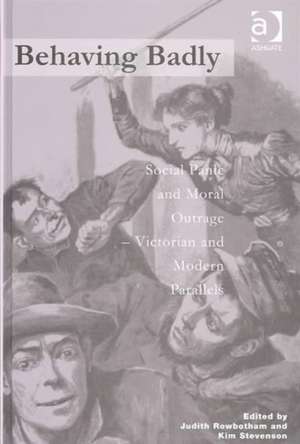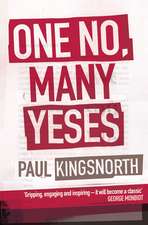Behaving Badly: Social Panic and Moral Outrage - Victorian and Modern Parallels
Autor Judith Rowbotham, Kim Stevensonen Limba Engleză Hardback – 28 oct 2003
Preț: 765.01 lei
Preț vechi: 1027.88 lei
-26% Nou
146.40€ • 151.92$ • 122.37£
Carte tipărită la comandă
Livrare economică 17-31 martie
Specificații
ISBN-10: 0754609650
Pagini: 272
Dimensiuni: 156 x 234 mm
Greutate: 0.5 kg
Ediția:1
Editura: Taylor & Francis
Colecția Routledge
Locul publicării:Oxford, United Kingdom
Cuprins
Contents: Foreword; Preface; Introduction: Behaving badly, Judith Rowbotham and Kim Stevenson; Acquitting the innocent. Convicting the guilty. Delivering justice?, David Bentley; Causing a sensation: media and legal representations of bad behaviour, Judith Rowbotham and Kim Stevenson; Policing a myth, managing an illusion: Victorian and contemporary crime recording, Tom Williamson; Policing bad behaviour – interrogating the dilemmas, Roger Hopkins Burke; Law and disorder: Victorian restraint and modern panic, Kiron Reid; Moral cancers: fraud and respectable crime, Sarah Wilson; The blast of blasphemy. Government, law and culture confront a chill wind, David Nash; A dangerous obsession? Gambling and social stability, Mike Ahearne; Legislating morality: Victorian and modern legal responses to pornography, Tom Lewis; Penny dreadfuls and perverse domains: Victorian and modern moral panics, Gavin Sutter; Discourses of denial and moral panics: the pornographisation of the child in art, the written word, film and photograph, Susan Edwards; Why can't a woman be more like a man? Attitudes to husband-murder 1889–1989, Judith Knelman; Gendered assumptions – madness, pregnancy and childbirth, M.E. Rodgers; From unlawful assembly to aggravated trespass: the control of protest in the 1880s and 1990s, Richard Stone; Further reading; Index.
Notă biografică
Descriere
Both the Victorian age and the late twentieth century are often characterised by contemporaries as times of apparent economic affluence and stability. They are often depicted as periods that shared a conviction that the stability of society, including its affluence, was threatened by the activities of social deviants. These essays aim to examine crime of a socially visible nature, in the context of social panic and moral outrage in both the Victorian period and the late twentieth century. Through a series of interconnected case studies, exploring the social and legal responses to such offences and their public presentation through popular reporting and the court system, a series of apparent continuities as well as discontinuities are highlighted in the making of legislation. The innovative approach taken by the editors and contributors to concepts of crime and bad behaviour, make this essential reading for academics and practitioners. The interdisciplinary focus of the book allows it to locate the legal processes and system firmly within the socio-cultural context, instead of examining it as a discrete area of individual study, making this text central to work in law, criminology and social policy, and history.









